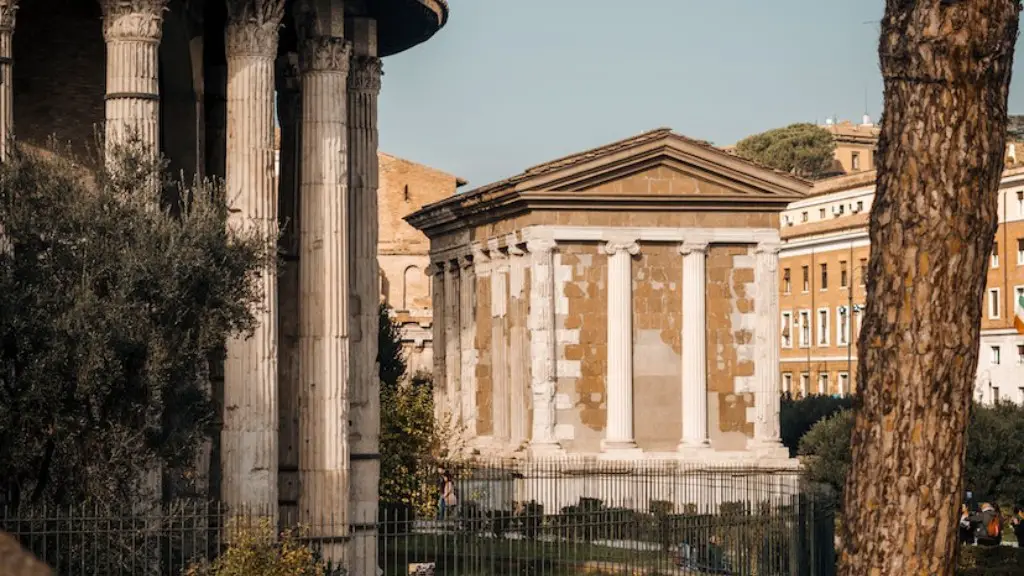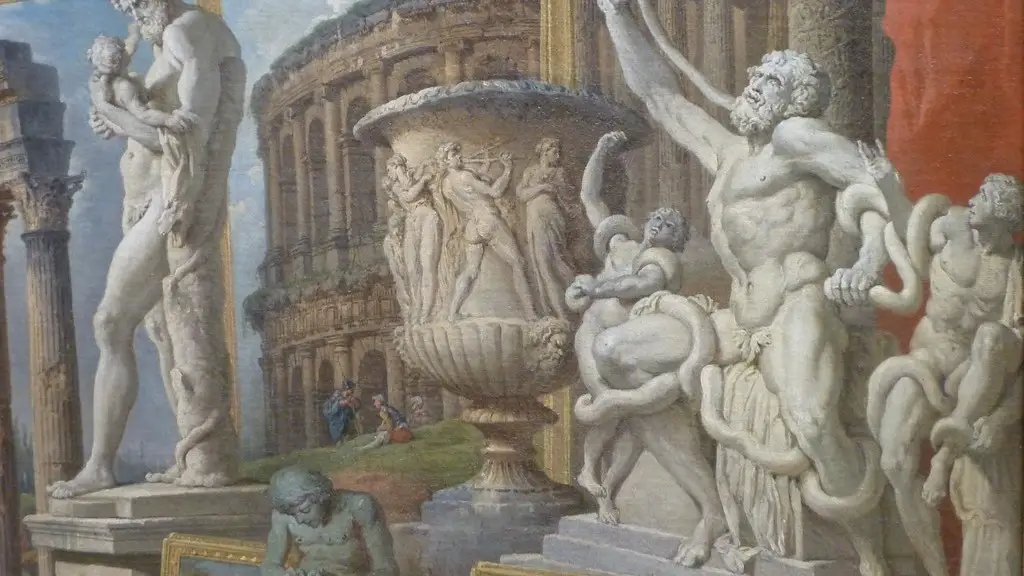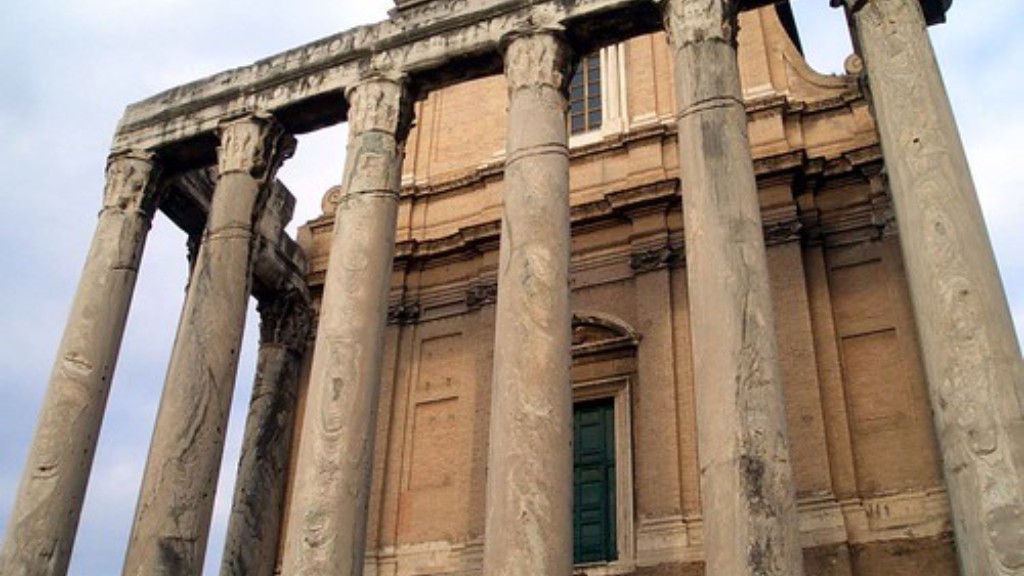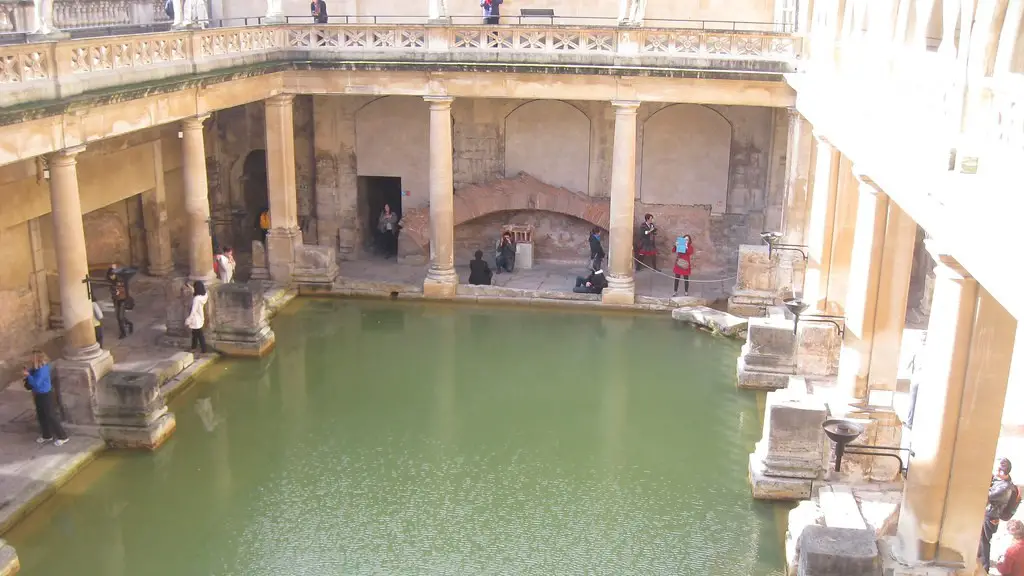What Was the Golden Age in Ancient Rome?
The great civilization of the Roman Empire spanned centuries, with its apex known as the Golden Age and its foundation coming in the third century BCE. This period of unprecedented wealth, power, and prosperity found its roots in the rule of Emperor Augustus, who fully established the Roman Empire in 14 CE and whose reign lasted until 37 CE. Augustus’ reign as Emperor marks the beginning of the Golden Age – a period of 200 years of peace, stability, and expansion – with its end coming in the mid-third century when the Empire entered a tumultuous period of civil war and fragmentation.
During this age, it was the Augustan Period which showed the most promise and potential, especially economically speaking. Roman citizens saw their taxes reduced and their property regained amidst an age of good governance. Emperor Augustus also passed several beneficial social reforms, granting citizens greater access to higher education, labour rights, and civil rights. His successor, Tiberius, was also a capable leader, who continued to expand the Roman Empire by halting large-scale piracy in the Mediterranean.
The Roman Empire was able to achieve this status of unmatched success largely due to its powerful military. At its peak power, the Roman Empire boasted the largest land-based army in the world, consisting of more than 540,000 soldiers. This powerful military was not only used to defend against dangerous enemy forces, but was also instrumental in Rome’s ability to expand its borders and acquire more land. This new expansion also enabled Rome to acquire resources such as metal, wood, and food – resources that directly contributed to its eventual economic success.
The Roman Empire also was involved in numerous improvements to the education system during this time, as more and more citizens began to become literate with increased access to the Latin language. This increased access to education generated a myriad of aspiring writers, philosophers, and natural scientists, who helped spread knowledge far beyond the boundaries of the Empire.
In the end, the benefits of Rome’s Golden Age were felt all throughout Europe and the Mediterranean region. Its innovations in business, engineering, military science, law, and art planted the seeds of the Enlightenment and of Modernism. Its legacy still lives on, as evidenced by the infinite number of buildings, roads, bridges, and statues throughout the world, that continue to remind us of the great civilization of the Roman Empire.
Innovation and Cultural Expansion
Innovation was a key element at the time of the Roman Empire’s golden age and was the driving force of its cultural expansion. Its advancements are easily seen in various aspects of its society – political, economic, and military. In regard to its politics, the Roman government perfected the model of the monarchy, established a reliable system of taxation and legal codes, and used a series of senators to legislate and oversee important issues. This period also saw the rise of ambitious emperors such as Julius Caesar and Augustus, who fostered brand new cultural practices such as the censuses and temple reconstruction.
Rome’s Golden Age also saw incredible advances in its economic industry. Trade with other countries boomed and resulted in the availability of new natural resources and imports from the ancient world. In addition to this, the Romans invented many new techniques to improve their farming and agricultural techniques and developed vibrant financial systems based on currency and banking. These new economic methods allowed the population to become wealthier and allowed the Empire to grow considerably.
Finally, Rome’s Golden Age saw tremendous advances in its military expertise. The legions (groups of foot soldiers) were heavily trained and could rely on complex tactics during battle. The Empire also saw advances in its naval engineering, allowing for powerful ships to patrol the Mediterranean Sea and protect the interests of Rome. This was an utterly new concept at the time and it drastically changed the face of warfare. All of these achievements ultimately allowed the Roman Empire to expand its borders significantly and make its mark on the ancient world.
The Lasting Legacy of Rome’s Golden Age
Rome’s Golden Age demonstrated the full extent of its power and its culture’s influence on the world. It passed down numerous innovations and achievements in virtually all aspects of life. It was during this period that the foundation of Roman law, architecture, and engineering was laid down and it changed the face of warfare forever. These aspects have been present in some form since the end of the period and continue to shape the world today.
The Roman Empire’s rise to power is a remarkable story. Its success was highly dependent on its ability to innovate and adapt to changing conditions. Its achievements, in fields such as politics, economics, art, and military science are some of the most significant in all of history and helped lay the groundwork for a later period of European supremacy. Even today, the engineering of the ancient Roman Empire continues to impress experts around the globe for its creative uses of concrete, steel, arches, and domes.
The respect for the Roman Empire’s Golden Age is largely reflected in the frequent references to its politics and culture in the modern-day. Its legacy can be seen in popular culture in forms such as fashion, video games, and TV shows. From its architecture to its language, Roman culture left its mark on civilization and helped shape the world as we know it today.
The Origin of Roman Religion
During the Golden Age of Rome, the Romans developed a unique system of beliefs and rituals which focused heavily on the worship of various gods and goddesses. These beliefs were heavily influenced by Greek mythology, but with a few key differences. In contrast to the Greeks who focused primarily on the Olympian gods and goddesses, the Romans paid homage to a much larger pantheon. This pantheon included gods and goddesses associated with war, fertility, justice, harvest, and other aspects of the natural world.
The Roman pantheon was divided among universal gods and goddesses, human gods, and private gods. Universal gods and goddesses were shared and worshipped by all members of society, while private gods were dedicated and worshipped only by specific individuals, families, or groups. The human gods, on the other hand, were members of society who became deified after their death. This group included deceased emperors, generals, and other notable historic figures.
The worship of these gods and goddesses was a central part of Roman life and it was usually done in state-organized rituals and ceremonies, such as those which took place during religious festivals. Religion was deeply embedded in the daily lives of the Romans and it provided them with a sense of belonging and identity, as well as a stable foundation for their political and social life.
Another interesting aspect of the Roman religion was its polytheistic nature. Rather than focusing on only one god or goddess, or even a few gods and goddesses, the Romans worshipped a multitude of different figures. This polytheistic system allowed them to reconcile their beliefs and customs with any other religion, as well as providing them with more options for worship and celebration.
Social Impact of Ancient Rome’s Golden Age
The Golden Age of Ancient Rome was not only a remarkable period of innovation, but it also was an age of great social advancement. During this time, there was a move away from the strict oligarchy which had previously governed Rome, towards a more open and accepting society. This period saw a large increase in religious and political freedom, as well as increased opportunities for citizens to pursue higher education. These social benefits helped create a more just society and nurtured a more enlightened mindset throughout Rome.
In addition, Rome’s Golden Age was marked by increased social mobility, as citizens had greater opportunities to acquire wealth and influence. This was due in large part to the expansion of the Empire, which allowed for the trade of goods and resources. As a result, many citizens became far more affluent than they had been before, further contributing to their social mobility. This newfound wealth and power provided citizens with the means to pursue their interests and enabled them to become even more successful.
Finally, Rome’s Golden Age was marked by a greater commitment to public works, with monuments and buildings being constructed across the Empire. This period of construction and beautification helped inspire a greater feeling of national pride and unity. As a result, the political and cultural influence of Rome was extended even further, as its citizens felt a greater sense of belonging and belonging to the Roman Empire.
Fading of Rome’s Golden Age
The Golden Age of Rome eventually came to an end in the mid-third century with the rise of two important factions, the Goths and the Vandals. The Goths were a Germanic people who had remained largely independent until this time, while the Vandals were a group of Germanic people under the rule of the Visigoths. These two groups, together with other migrating tribes, forced the Roman Empire to retreat its Eastern and Southern borders, leading to its eventual decline and eventual fall. These multiple invasions put a strain on the already decimated and weak Roman economy and military, bringing an end to the Golden Age of Rome – and the Roman Empire in its entirety.
The effects of this period of invasion, however, far outlived the end of Roman civilization. The Gothic invasions placed immense strain on most of the countries who had been subject to Roman rule, leading to the eventual collapse of many of their governments, economies, and societies. In addition, the losses in infrastructure, resources, and manpower were too great for many parts of the Empire to recover from – thus setting the stage for the Middle Ages.
The legacy of Rome’s Golden Age, however, lives on. Its powerful leaders, powerful military, and innovative advances in all aspects of life, are still remembered and respected throughout the world. The lessons of the Roman Empire’s greatness, strength, and resilience continue to live on, inspiring generations of leaders and citizens alike.





